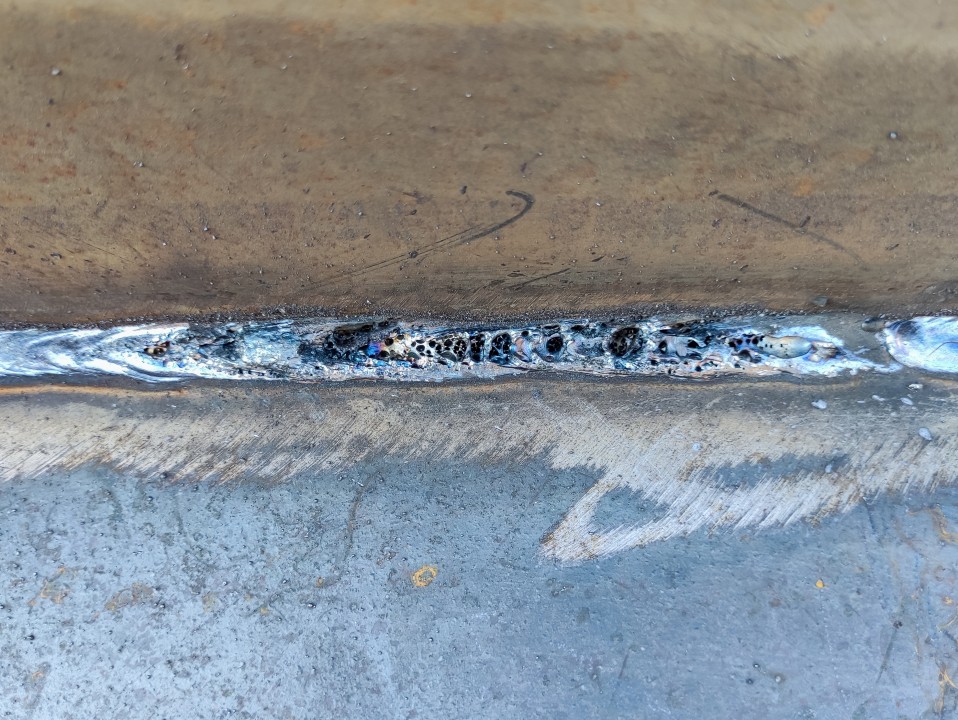Specialist Suggestions on What is Porosity in Welding and Just How to Resolve It
Specialist Suggestions on What is Porosity in Welding and Just How to Resolve It
Blog Article
The Scientific Research Behind Porosity: A Comprehensive Overview for Welders and Fabricators
Recognizing the intricate mechanisms behind porosity in welding is essential for welders and producers aiming for flawless craftsmanship. As metalworkers delve right into the depths of this phenomenon, they uncover a globe regulated by different aspects that affect the formation of these small voids within welds. From the composition of the base products to the complexities of the welding process itself, a wide range of variables conspire to either intensify or minimize the presence of porosity. In this comprehensive guide, we will decipher the science behind porosity, discovering its results on weld high quality and unveiling progressed strategies for its control. Join us on this journey via the microcosm of welding blemishes, where accuracy satisfies understanding in the pursuit of flawless welds.
Understanding Porosity in Welding
FIRST SENTENCE:
Evaluation of porosity in welding discloses important understandings right into the honesty and quality of the weld joint. Porosity, characterized by the existence of cavities or spaces within the weld metal, is a typical concern in welding processes. These gaps, if not appropriately addressed, can jeopardize the architectural integrity and mechanical properties of the weld, causing possible failures in the finished product.

To discover and evaluate porosity, non-destructive screening approaches such as ultrasonic screening or X-ray evaluation are commonly used. These techniques permit the identification of interior problems without jeopardizing the stability of the weld. By examining the dimension, form, and circulation of porosity within a weld, welders can make enlightened choices to boost their welding procedures and attain sounder weld joints.

Variables Influencing Porosity Formation
The event of porosity in welding is affected by a myriad of factors, varying from gas shielding performance to the details of welding specification setups. Welding parameters, consisting of voltage, present, take a trip speed, and electrode kind, also effect porosity formation. The welding method employed, such as gas steel arc welding (GMAW) or shielded metal arc welding (SMAW), can influence porosity formation due to variants in heat circulation and gas coverage - What is Porosity.
Impacts of Porosity on Weld Quality
Porosity development dramatically jeopardizes the architectural integrity and mechanical residential properties of bonded joints. When porosity exists in a weld, it develops voids or cavities within the material, reducing the total strength of the joint. These voids serve as tension focus points, making the weld extra vulnerable to splitting and failure under lots. The presence of porosity also deteriorates the weld's resistance to deterioration, as the trapped air or gases within deep spaces can react with the surrounding setting, bring pop over here about degradation in time. Furthermore, porosity can impede the weld's capacity to hold up against pressure or impact, further threatening the overall quality and reliability of the welded structure. In vital applications such as aerospace, vehicle, or architectural buildings, where safety and security and durability are critical, the harmful impacts of porosity on weld high quality can have serious consequences, emphasizing the significance of minimizing porosity through proper welding strategies and treatments.
Strategies to Reduce Porosity
To enhance the high quality of welded joints and make certain structural honesty, welders and producers employ certain techniques intended at minimizing the formation of gaps and dental caries within the material throughout the welding process. One reliable approach to decrease porosity is to guarantee correct material prep work. This consists of complete cleansing of the base metal to like this get rid of any impurities such as oil, grease, or dampness that might add to porosity formation. Furthermore, making use of the suitable welding specifications, such as the proper voltage, present, and take a trip rate, is important in preventing porosity. Preserving a constant arc size and angle during welding likewise assists lower the chance of porosity.

Using the ideal welding strategy, such as back-stepping or utilizing a weaving movement, can also aid distribute heat evenly and lower the possibilities of porosity formation. By implementing these methods, welders can effectively lessen porosity and generate high-grade welded joints.

Advanced Solutions for Porosity Control
Applying cutting-edge modern technologies and ingenious methods plays an essential function in achieving premium control over porosity in welding processes. One advanced option is the use of advanced gas blends. Shielding gases like helium or a combination of argon and hydrogen can help in reducing porosity by giving better arc security and enhanced gas insurance coverage. Furthermore, employing go to this website sophisticated welding techniques such as pulsed MIG welding or customized ambience welding can also assist minimize porosity concerns.
One more innovative service entails the usage of sophisticated welding tools. For example, making use of tools with integrated attributes like waveform control and sophisticated source of power can improve weld high quality and reduce porosity dangers. The execution of automated welding systems with specific control over specifications can substantially lessen porosity issues.
In addition, including innovative monitoring and evaluation modern technologies such as real-time X-ray imaging or automated ultrasonic screening can assist in detecting porosity early in the welding procedure, permitting prompt rehabilitative activities. Generally, integrating these advanced remedies can substantially boost porosity control and improve the general quality of bonded parts.
Final Thought
In final thought, recognizing the science behind porosity in welding is essential for welders and makers to produce high-grade welds - What is Porosity. Advanced options for porosity control can further improve the welding procedure and guarantee a solid and trusted weld.
Report this page